QuestionI have 2 koi that are about 5" in a 55 gal tank, is there anything that I can do to keep that ammonia level stabalized? Also the one is showing some signs of stress and is starting to get an open sore, I am going to try some aquarium salt and see if that will help some. Also they don't seem very hungry and they are supposed to be fish that like to eat. What do you reccomend feeding them? They don't like to come to the surface to eat, and almost seem to not be able to see the sinking golfish pellets that I am feeding them now.
Thank you.
AnswerHi Cara;
If the tank is established (up and running with fish for more than 8 weeks) there should be no ammonia present at all. If the tank is still new and in the break-in period it will have ammonia and then nitrites until it completes a full nitrogen cycle. I will include my article on new tanks at the end of this letter in case you need to know more.
If it is an established tank, make water changes of 25% twice a week while vacuuming the gravel to get the waste out of there that is causing the ammonia. Do this for a month or until the tank stabilizes. Cut back on food so they completely finish all the food in 3 minutes. If they don't want much right now, don't give them much right now. Remove what they don't eat. Leftover food causes ammonia. The high levels of ammonia will make them feel sick and not be so hungry anyway. The water changes will help heal the sore too.
Koi tend to be very shy and need lots of hiding places and plenty of space to swim. They are also very nervous fish so keep things calm around them and they don't injure themselves. You will eventually need a bigger tank or a pond for them too. They get about 3 feet long as adults. Don't believe the myth that "fish grow to the size of their tank". It really isn't true. It's better to let fish have what they need than to force them to comply with what we want.
Here is my article on new tanks to help you if you need it;
**********
New Tank Syndrome or Break-in Period
So you have a new tank and you filled it up, put the filter together, mounted the heater into place and turned on the lights. You have all the plants and decorations where you want them....
You are ready for fish.
But, your filter is not ready for a full tank of fish yet.
The filter is running and moving the water and cleaning out crud, right? Of course!
But a very important part of your filter is the part you can't see. An aquarium filter removes the larger visible stuff, but it also must remove the dissolved fish waste that turns into ammonia in the water. To do this, special bacteria must grow in the filter system and on the particles of gravel in the bottom of your tank. This process occurs even on a limited scale in little fish bowls that have no filter in them.
This is "New-Tank Syndrome" or the "Break-in Period". The entire process takes 6 to 8 weeks to complete because these "nitrifying" bacteria grow quite slowly.
Start off with only one or two hardy fish (no more than 2 total inches of fish) for every ten gallons of water and don't add more until the 6 to 8 weeks has gone by. Hard to be patient, but it is worth it to keep your fish alive and healthy. As a matter of fact, the bacteria cannot develop without fish in the tank. You can let that tank sit forever without fish in it, but as soon as the first fish goes in the process begins. Avoid changing the filter pads during break-in. This removes the bacterial colonies that are essential to a balanced aquarium. You can rinse the filter pad out in a container of aquarium water. This will preserve most of the bacteria colonies while still allowing your filter to flow freely. Even using bacteria additives and water conditioners when you first set up the tank will not make a tank begin the cycle by itself. If there are no fish to provide food (fish waste) for the bacteria, the beneficial bacteria cultures will die and you will have to start the colonies all over again once fish are added to the tank. Once the tank has completed the initial cycle, you can change the filter pads every 4 weeks or so. But for now, just rinse them.
Feed your new fish VERY lightly. Any excess food will cause additional waste your system cannot afford to have right now. If you see food floating around or lying on the plants and gravel after five minutes, too much food is going into the tank. Cut back a little each time you feed until it is ALL gone 5 minutes after you feed them. Feed them once a day.
During this "break-in period" your tank will become cloudy and milky looking. You may have to tolerate this for the entire break-in period but it is only temporary. Changing 25% of the water three times a week until the break-in period is over helps a great deal. Changing water reduces the ammonia and nitrites that rise while the bacteria continues to multiply. If ammonia and/or nitrites become too high, your fish will become stressed and possibly die. Use a good water conditioner when you replace the water and make sure it is the right temperature to avoid shocking your fish.
When the break-in is over after 6 to 8 weeks and there are no nitrites or ammonia present in the water you can slowly add more fish. Add one or two every week until you reach the desired population. This allows the bacteria to adjust to the new population every time before adding more. Monitor the nitrites and ammonia to be sure they don't come up. If they do, make a 25% water change and check them again. Don't add the next fish until the levels are down again.
The safe maximum population for any size tank is one inch of adult fish for every gallon of water in the tank. Do some research to be sure of the fish you are interested in. Even though they are small when you buy them, you have to base your population calculations on full-sized adult fish. Many hobbyists have up to two inches per gallon but this can be risky. If a water quality issue arises or a disease occurs it will spread fast and furious in an over-populated tank. In any case, 25% water changes every week to two weeks are absolutely essential for the health of your fish.
Following these guidelines will help you get your new tank on the right track.
**********
At Your Service;
Chris Robbins
Come on over and join us on the freshwater fish forum at About.com to get even more information too;
http://freshaquarium.about.com/od/questionsanswers/a/naavigateforum.htm

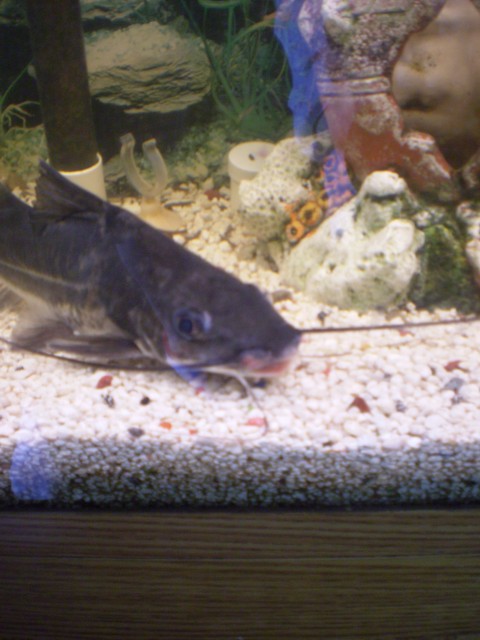 feeler rot / air gulping
QuestionRamona
QUESTION: Hi, I submitted this sa
feeler rot / air gulping
QuestionRamona
QUESTION: Hi, I submitted this sa
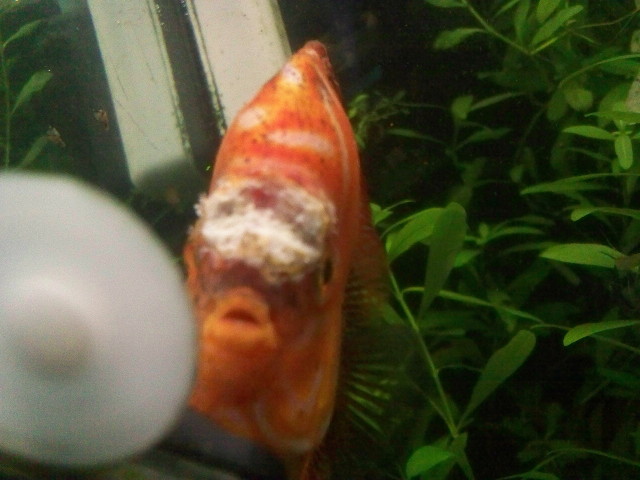 Discus Open Wound
QuestionDiscus Sore
QUESTION: Hello,
My 2 year o
Discus Open Wound
QuestionDiscus Sore
QUESTION: Hello,
My 2 year o
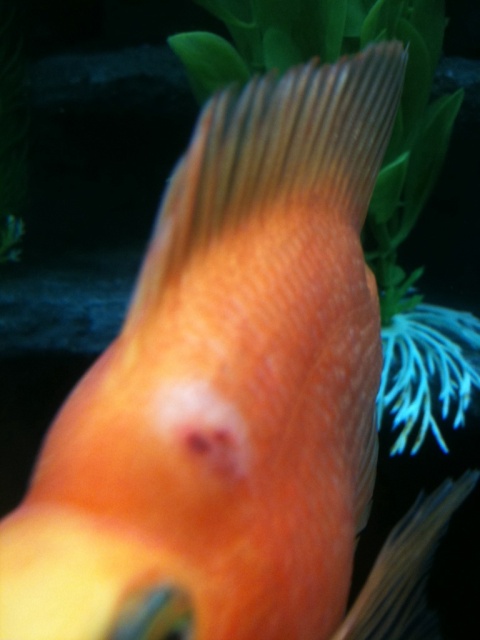 Blood red parrot has a swollen red spot
QuestionQUESTION: I have a 55 gallon tank nine fish inc
Blood red parrot has a swollen red spot
QuestionQUESTION: I have a 55 gallon tank nine fish inc
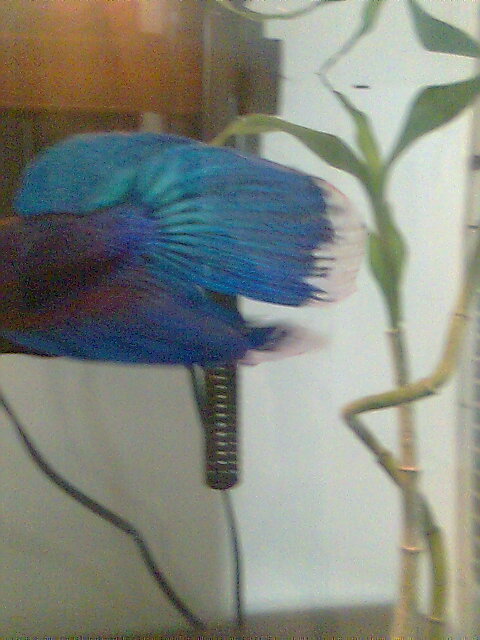 Finrot
QuestionQUESTION: Hi. I was wondering our Bettas fin is
Finrot
QuestionQUESTION: Hi. I was wondering our Bettas fin is
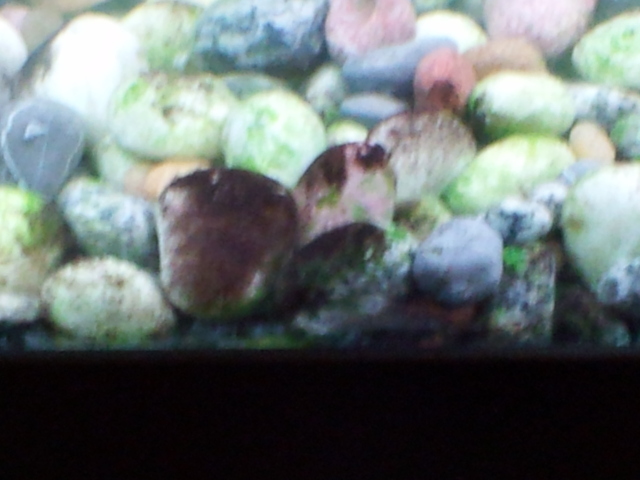 mold growing in our 150 gallon fishtank
Question
fish tank
We had Oscars in our tank and
mold growing in our 150 gallon fishtank
Question
fish tank
We had Oscars in our tank and